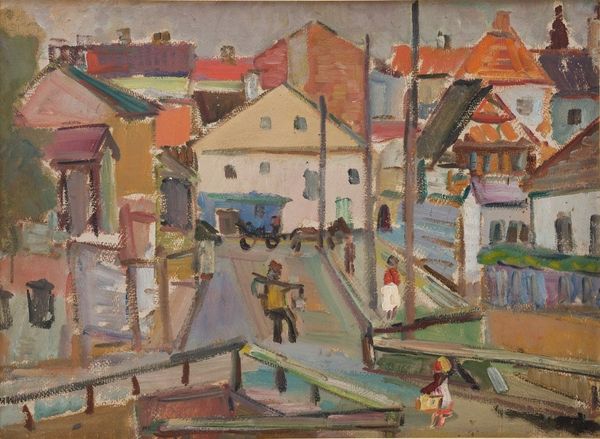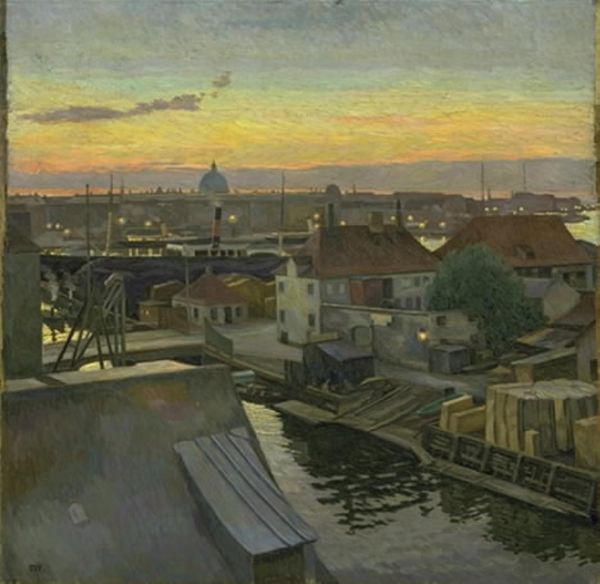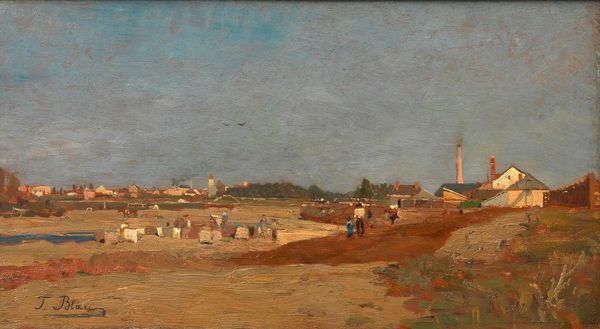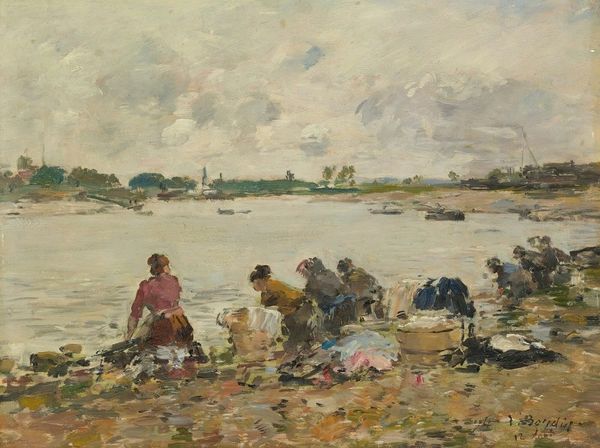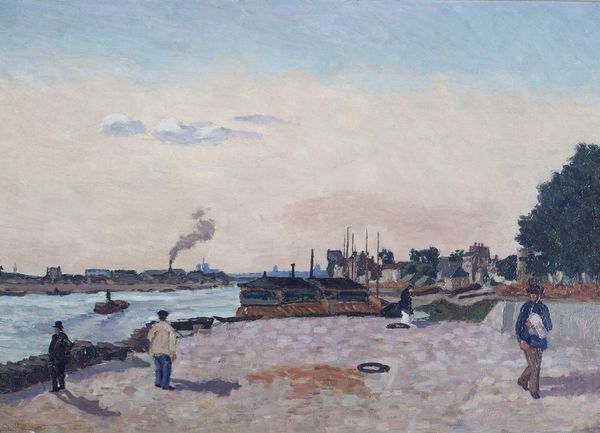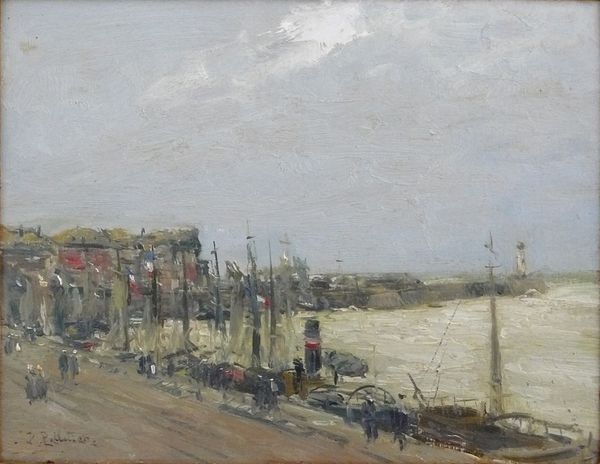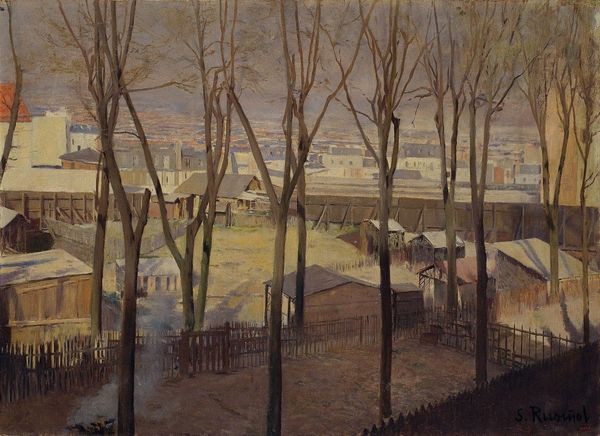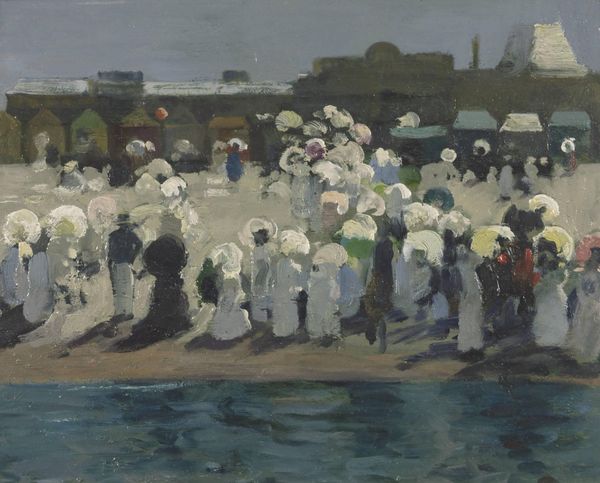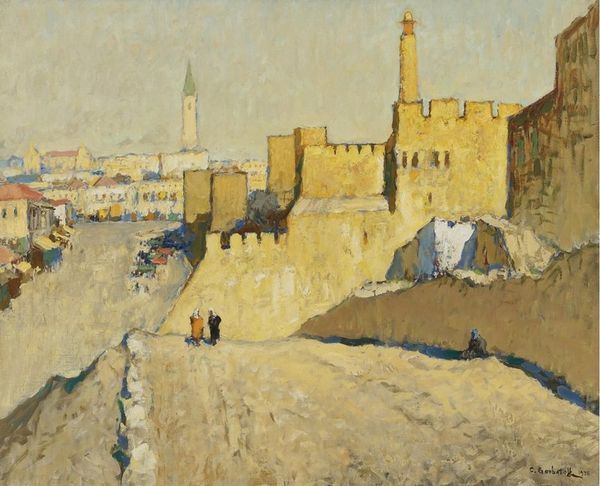
Dimensions: support: 635 x 762 x 18 mm
Copyright: © The estate of William Townsend | CC-BY-NC-ND 4.0 DEED, Photo: Tate
Curator: William Townsend's "South Bank" presents us with a slice of London life rendered in oil on a 635 by 762 mm support. A relatively modest size. Editor: It’s immediately striking how the muted colors give a sense of melancholy, almost as if the city itself is sighing. Curator: Note the use of impasto in the skyline. See how Townsend builds texture to represent industry. It suggests a certain heft, the labor inherent in shaping a city. Editor: The figures though, they're silhouetted, anonymous. Perhaps they represent the collective memory, the shared experience of urban existence. Curator: Or perhaps the artist’s commentary on the dehumanizing aspects of industry – how the individual’s labor is subsumed by the larger machine. Editor: It's all there, isn't it? The promise and the cost of progress, subtly rendered through careful composition. Curator: It is a powerful commentary on the changing landscape of work and life. Editor: A somber but evocative snapshot of London's enduring spirit.
Comments
Join the conversation
Join millions of artists and users on Artera today and experience the ultimate creative platform.
tate 6 months ago
⋮
William Townsend studied at the Slade School of Art from 1926 to 1930, where he was taught by Professor Henry Tonks (1862-1937). In the 1930s he became closely associated with the artists of the Euston Road School, who painted works depicting daily urban life in a closely observed, realistic manner. In 1948, the year in which he painted this picture, he had returned from a brief period of conscription in the Royal Artillery and was back at the Slade, this time as a teacher. The painting shows a view of the South Bank of the Thames, which was, at this point, undeveloped. The view, as seen from the Victoria Embankment in the foreground, shows Hungerford and Waterloo bridges on the left and St Paul's Cathedral in the distance. The area depicted was to be the site of the Festival of Britain in 1951, but when this image was painted it was still an area badly damaged by war-time bombing and had fallen into dereliction. The painting evokes an era that has been described as 'a period of drabness, austerity, rationbooks and queueing' (Neve, p.10). The subject of the painting, a group of bystanders gazing out over the river, recalls Seurat's depiction of Bathers and the Ile de la Grand Jatte painted in Paris fifty years before. Furthermore, both images capture a city at a point of social transition. The foreground figures and dusky colours also recall images of figures promenading along the London riverside in the early evening light painted by such artists as Sickert (1860-1942), Monet (1840-1926) and Whistler (1834-1903), who claimed that such light effects revealed the city in its natural state. Townsend's fascination with the underlying structure of his painting can be seen in his interest in the architectural developments within the city as well as in the strong geometric underpinning to the composition. This interest was to develop in the coming years and can be seen in Townsend's two other paintings in the Tate collection: Hop Alleys (Tate N06148) and Dungeon Ghyll (Tate T00486). Further reading:Christopher Neve, William Townsend 1909-1973: Retrospective Exhibition of Paintings and Drawings, exhibition catalogue, Royal West of England Academy, Bristol, 1978.Karyn Elizabeth Allen, Charlotte Townsend-Gault, William Townsend in Alberta, exhibition catalogue, The Nickle Arts Museum, The University of Calgary, Calgary, Canada. Chloe JohnsonJune 2002
